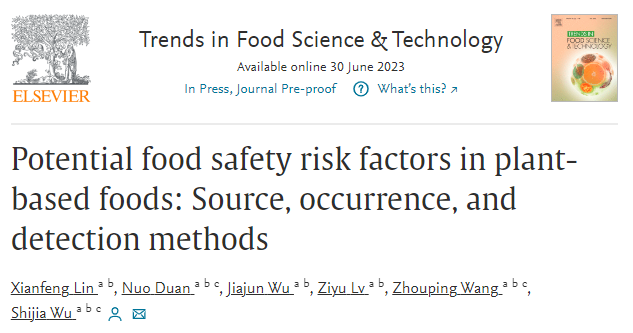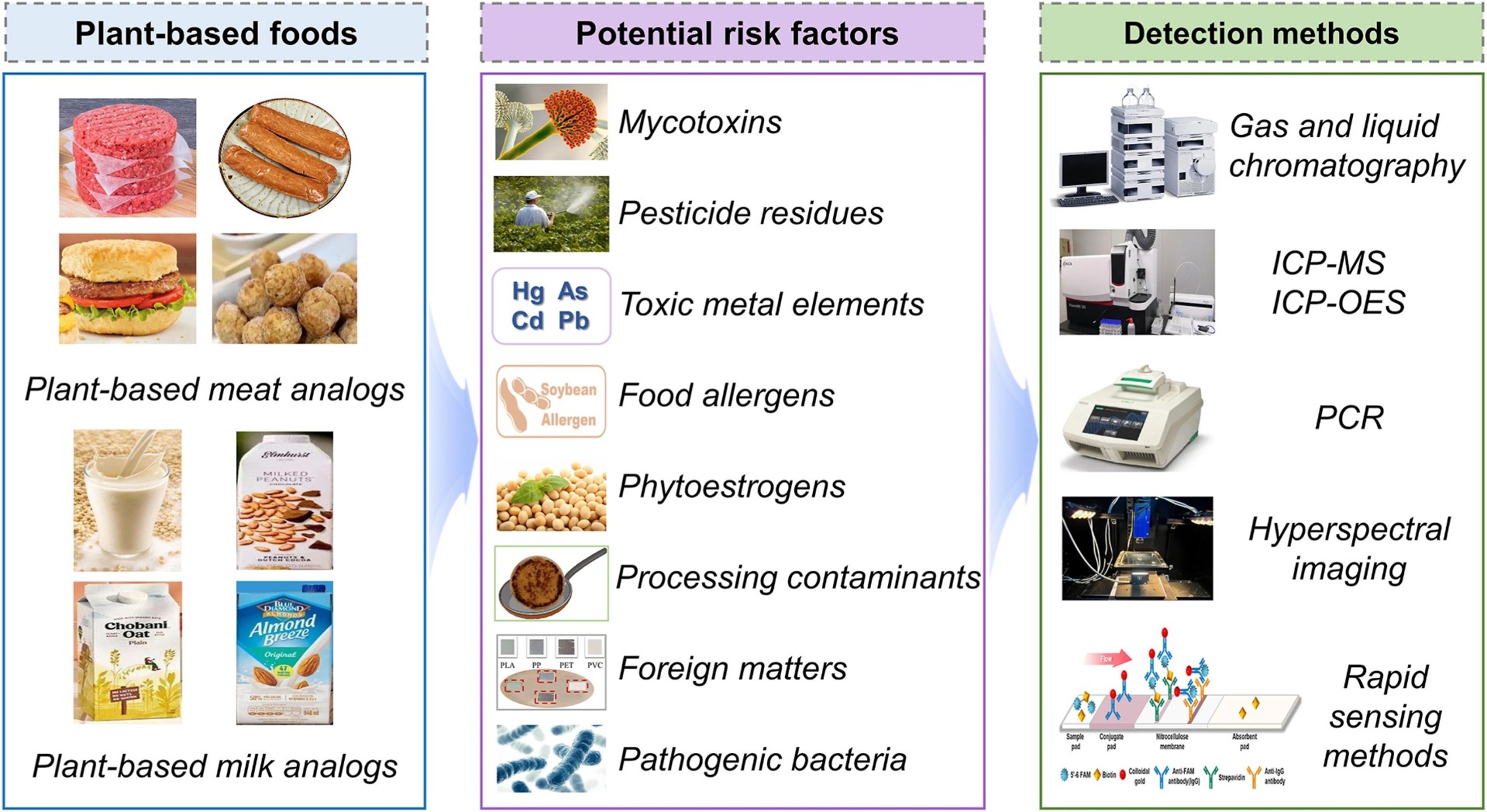关于植物基食品潜在食品安全风险因子的综述论文

近日,江南大学食品科学与资源挖掘全国重点实验室Xianfeng Lin(第一作者)、吴世嘉教授(通讯作者)等在国际食品顶刊《Trends in Food Science & Technology》(Q1 IF:15.3)发表了题为“Potential food safety risk factors in plant-based foods: Source, occurrence, and detection methods”的综述论文。

近年来,由于人们对环境、人体健康、宗教信仰、道德准则和动物福利关注越来越多,植物基食品获得了快速发展。除了植物基食品加工和营养特性,我们也应该更多关注其安全性。在不同阶段,各种食品安全风险因子可能被引入到植物基食品中。为了确保人体健康和新兴工业的健康发展,理解和检测植物基食品中潜在风险因子很重要。因此,该论文系统综述植物基食品中的潜在风险因子并对其的检测。首先,对植物基食品中潜在风险因子的分类、来源和出现进行了分析;第二,介绍了目前已报道的检测方法和原理;最后,批判性讨论了其现有挑战和未来的发展趋势。
植物基食品中的潜在风险因子包括真菌毒素、农药残留、毒性金属元素、过敏原、植物雌激素、加工污染物、异物和致病菌,这不同于动物基食品。这些风险因子在大量文献中被证实。目前,色谱法、电感耦合等离子体、新兴传感策略、聚合酶链式反应和高光谱成像等已经被用于监测植物基食品中的风险因子,并得到令人满意的灵敏度和特异性。未来,我们应该在鉴定、监测和控制植物基食品中风险因子上进行更多的工作,这将大大保障安全消费和植物基食品健康市场发展。
 Fig. 1. Overview of potential food safety risk factors in plant-based foods and their detection methods.
Fig. 1. Overview of potential food safety risk factors in plant-based foods and their detection methods.


Fig. 3. (a) A MOF nanozyme-based ELISA for the detection of AFB1 (Xu et al., 2021). (b) A carbon nanodots-based ECL immunosensor for the analysis of glyphosate (Guerrero-Esteban et al., 2021). (c) An N-CDs@MIPs fluorescent sensor for ultrasensitive detection of genistein (Zhang et al., 2023). (d) AuNPs-based colorimetric sensing of β-conglycinin (Ma et al., 2022).

Fig. 4. (a, b) A portable CRISPR-Cas12a-integrated lateral flow strip for the detection of Staphylococcus aureus and (c) the analysis of nuc gene and 16S rDNA of 1 × 102 CFU/mL bacteria in artificially contaminated soy milk (Qian et al., 2022). (d) Photograph and scheme of the SPR sensing chip and the responsive curve to total hazelnut protein: injecting (TII) analyte and (TIII) running buffer (Xiao et al., 2023).
 Fig. 5. (a) Transmission HSI system and (b) the application for the discrimination of ADFM inside soy protein meat semi-finished products (Shi et al., 2023).
Fig. 5. (a) Transmission HSI system and (b) the application for the discrimination of ADFM inside soy protein meat semi-finished products (Shi et al., 2023).
来源 | 食品放大镜

